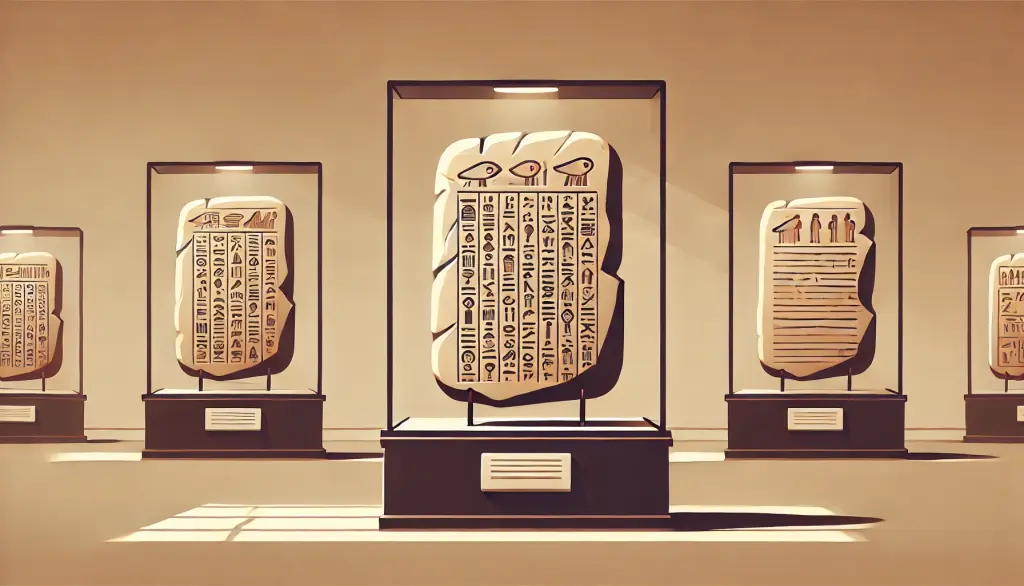
Handwriting is an integral component of human communication, artistry, and expression, yet few of us stop to think about its origins. The fascinating history of handwriting traces back thousands of years, evolving alongside human civilization and playing a pivotal role in shaping societies. But who exactly invented handwriting?
Handwriting, in its most basic form, emerged alongside the invention of writing itself. Writing began as early pictorial or symbolic expressions carved or etched onto cave walls and rocks by prehistoric humans, approximately 30,000 to 40,000 years ago. These early images served to communicate stories, record events, or perhaps had spiritual or ritualistic purposes. However, true handwriting, characterized by the structured use of symbols, characters, or letters to compose words and sentences, would emerge much later.
One widely acknowledged birthplace of writing, and thus handwriting, is ancient Mesopotamia (specifically Sumeria), around 3200 BCE. The Sumerians developed the first known system of writing called cuneiform. Using wedge-shaped styluses pressed into soft clay tablets, they created one of humanity's earliest known scripts. Gradually, the complex, pictographic nature of these scripts evolved into simpler, stylized symbols, setting the stage for personalized handwriting adaptations.
Around the same time period, ancient Egyptians were developing another early writing system, hieroglyphics, composed of detailed pictorial symbols carved into stone monuments or inked onto papyrus scrolls. Egyptian scribes developed simplified scripts, including hieratic and later demotic writing forms, for everyday use, allowing quicker documentation and recording of administrative, economic, and social matters. Hieratic marked one of the first significant adaptations toward what we now define as handwriting, written quickly, expressively, and personally by hand.
Far from ancient Mesopotamia and Egypt, Chinese civilization independently developed another unique writing system around 1200 BCE during the Shang Dynasty. Ancient Chinese characters, written initially by carving onto bones and tortoise shells (known as oracle bone script), gradually transitioned to brush-inked characters; thus, Chinese brush calligraphy came into existence. The use of brushes allowed for the artistic expressiveness and individuality that still characterize East Asian handwriting traditions today.
Perhaps one of the most influential developments in the evolution of handwriting was the Phoenician alphabet (circa 1100 BCE–800 BCE). Unlike pictographic or symbolic scripts requiring knowledge of thousands of symbols, the Phoenician system simplified writing through a concise alphabet comprised of around two dozen consonantal symbols. This breakthrough allowed writing to become accessible beyond specialized priestly classes, leading to more widespread literacy and facilitating personalized penmanship.
Phoenician script inspired other alphabets, including Hebrew, Aramaic, Greek, and subsequently Latin alphabets, progenitors of the modern scripts used widely in western languages today.
The Roman civilization utilized handwritten manuscripts explicitly developed for record keeping, bureaucracy, and literature. After the fall of Rome, monks and scribes across medieval monasteries in Europe continued the tradition of handwritten texts, meticulously reproducing manuscripts by hand, giving rise to distinct styles like Carolingian minuscule and Gothic script. These stylistic innovations paved the way towards modern handwriting, further evolving into various forms of cursive and italicized scripts that emerged through the Renaissance and later centuries.
With the advent of movable printing technologies in fifteenth-century Europe, handwriting became less dominant, though it never fully lost relevance. Education systems standardized cursive and manuscript scripts, and handwriting became synonymous with personal choice and artistic expression as well as practical communication.
In modern times, handwriting faces new shifts brought about by digital technology. The rise of computers, keyboards, smartphones, and tablets have significantly changed how people communicate, leading some to wonder about handwriting's continuing importance. Nevertheless, handwriting retains cultural and educational value, enabling cognitive development, personalized artistic expression, and cultural continuity.
It is impossible to credit a single individual or culture as the sole inventor of handwriting. Rather, handwriting evolved gradually across diverse human civilizations and cultures, each iteration contributing uniquely to its overall development and richness.
Thus, handwriting should be seen as a testament to collaborative human creativity and innovation across millennia, shaping itself alongside societies and civilizations, recording our histories, passions, struggles, and triumphs along the way.
You might also like:
The digital handwriting activities for kids are both engaging and ideal for learning to write well in a personalized way
The handwriting assessment for kids quickly evaluates writing quality, including legibility and form
The handwriting worksheets for kids are available in many fonts, both cursive and manuscript, in an easy-to-print PDF format